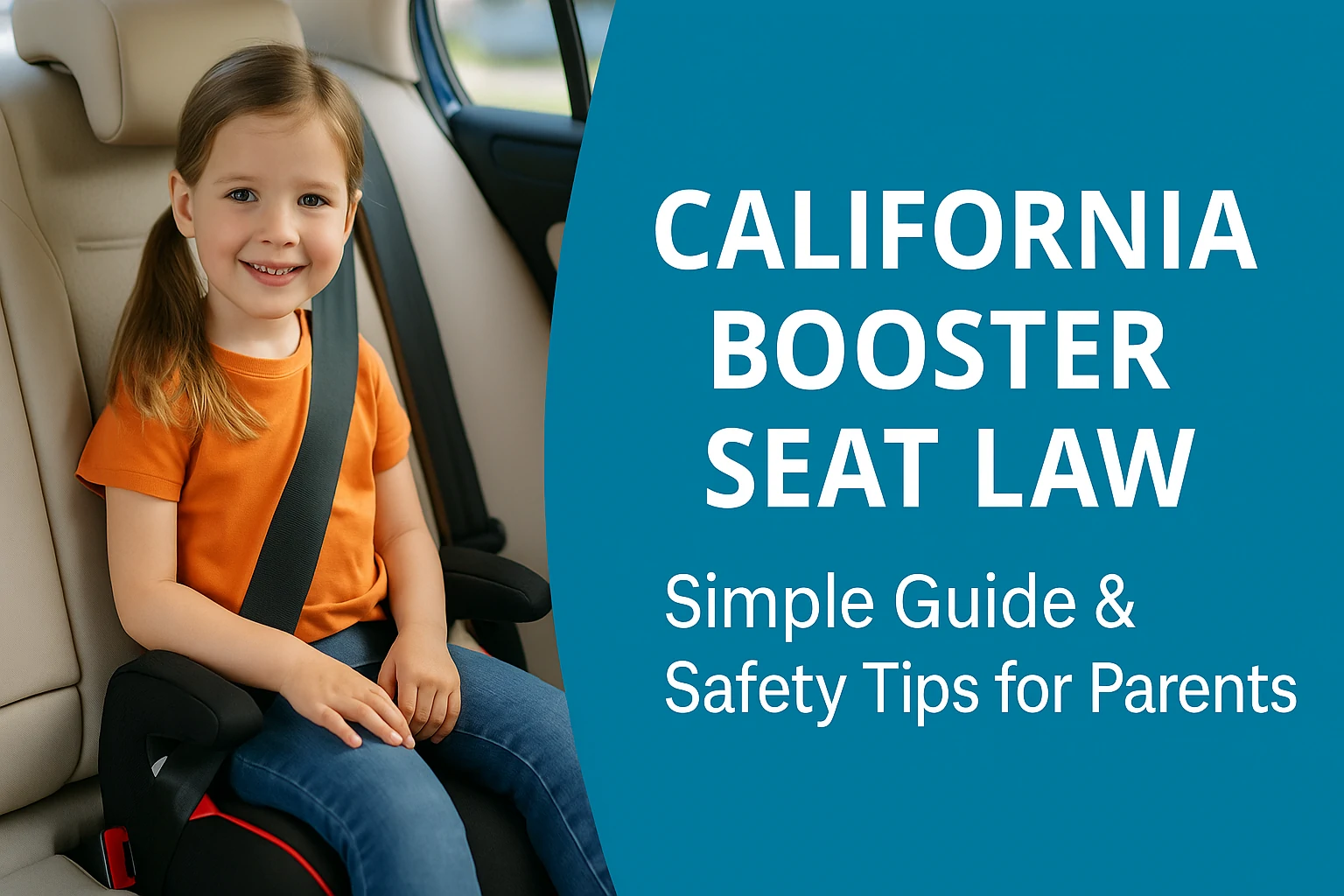Parents want to keep their children safe in every way. That includes safety in the car. California has laws to help with this. These rules tell families when to use car seats, booster seats, and seat belts.
Many parents misunderstand the law. They believe age matters most. Others move their child to a booster seat too soon. Some wait longer than needed. The law looks at both age and height. This helps make sure the seat belt fits the child the right way.
Car crashes can happen without warning. Even short trips can turn dangerous. A booster seat gives more protection than a seat belt alone. It helps the belt stay in the right place on the child’s body.
This article gives you the facts. It shows when your child should use a booster seat and when they can move on. It also helps you follow the law with less stress. Safety comes first, and the right seat makes a big difference.
Why Children Need Booster Seats
Children are still growing. Their bodies do not fit adult seat belts yet. A booster seat lifts them up, so the seat belt rests in the right place. This makes the belt work the way it should.
Seat belts are built for adults. Without a booster, the belt may press on a child’s neck or stomach. This can cause serious harm in a crash. A booster seat makes sure the belt goes across the chest and hips. That is where it offers the best protection.
Most children are not tall enough for a seat belt until they reach 4 feet 9 inches. Until then, a booster seat helps keep them safe.
What the California Law Says
California law says all children under 8 must ride in a car seat or booster seat in the back seat. That includes both age and height. Once a child is 8 or older and at least 4 feet 9 inches tall, they may use the regular seat belt.
Children under 2 must ride in a rear-facing car seat, unless they weigh 40 pounds or are 40 inches tall. Rear-facing seats support a baby’s head and neck better during a crash.
Children should ride in the back seat until age 13. This is not just a rule. It is safer. Front airbags can harm young kids even during small accidents.
Police can give tickets if a child is not in the right seat. Fines can be over $100 for the first mistake and more if it happens again. But more than the fine, it’s about safety. Parents should care most about keeping their children out of harm’s way.
When Can a Child Stop Using a Booster Seat?
Many parents ask this question. The answer is not just about age. Size also matters. The law allows children to switch to a seat belt at 8 years old if they are also tall enough.
Here’s a simple way to know if a child is ready:
- Can the child sit all the way back with knees bent at the edge of the seat?
- Does the seat belt rest across the shoulder, not the neck?
- Does the lap belt stay low across the hips, not the stomach?
- Can the child stay in this position without slouching?
If the answer is no, the child should stay in the booster seat. Even if the law says it’s okay, parents should wait until the belt fits just right. That choice could save a life.
How to Pick the Right Booster Seat
Booster seats come in two main types. One has a high back. The other has no back at all. Both work well if they fit the child and the car.
A high-back booster gives more support for the head and neck. It works best in cars without built-in headrests. A backless booster is simple and light. It is fine for older kids in cars that already offer head support.
Parents should always read the booster seat manual. The seat must match the child’s weight and height. It must also sit flat on the car seat. The belt must go through the booster seat guides. This helps the belt stay in the right place.
Do not use a booster that is old, broken, or missing parts. Always check the label to make sure it meets safety standards.
If you travel often or want to learn about booster seat laws in other states, you can read more about the New Jersey booster seat law.
Common Mistakes to Avoid
Many families move their kids to booster seats too soon. This puts them at risk. A child should not leave a harnessed seat until they outgrow it by height or weight.
Letting children ride in the front seat too early is also a problem. Airbags can hit young kids hard in a crash. That’s why experts say kids should stay in the back until at least 13.
Some parents do not use the seat belt properly with the booster seat. The belt must go over the chest and hips. It should never touch the neck or go behind the back.
Parents should not rush the process. The goal is not just to follow the law. It’s to protect children until their bodies are strong enough for a regular seat belt.
Why This Law Matters
No parent wants to imagine a car crash. But it can happen without warning. In a crash, a child without the right seat could suffer severe injury.
Booster seats lower the chance of harm. They help seat belts do their job. This small step offers strong protection.
Studies show booster seats reduce injury risk by half compared to seat belts alone. That is a big difference. Taking a few extra steps today can lead to years of safety.
Laws like this help parents know what to do. They set a clear path to follow. But real safety comes from more than just obeying the law. It comes from parents who choose to protect their children every time they buckle up.
Tips to Help Parents Stay on Track
Parents have a lot to manage. But keeping children safe in the car should stay near the top of the list. A few small actions can make a big difference.
Use the correct seat for your child’s size and age. Follow the steps in the manual. Make sure the seat belt fits right. Check for recalls or warnings from the maker.
Stay updated as your child grows. They may look ready for a seat belt, but their body might say otherwise. Size, not just age, should guide your choices.
If unsure, ask for help. Fire stations and safety centers often check car seats for free. Experts there can show you the safest setup.
Conclusion
California’s booster seat law helps protect children on the road. It gives clear rules based on a child’s age, height, and weight. More than just a legal rule, it is a safety guide that can prevent tragedy.
Parents should learn the law, pick the right seat, and follow simple steps. Every ride should start with the same habit: buckling up the right way. Children who use the right seat are much safer than those who do not.
Choosing safety does not take much time. But the reward is great. It gives peace of mind and real protection. When parents follow the rules, they teach their kids how to travel safely. That lesson can last a lifetime.




